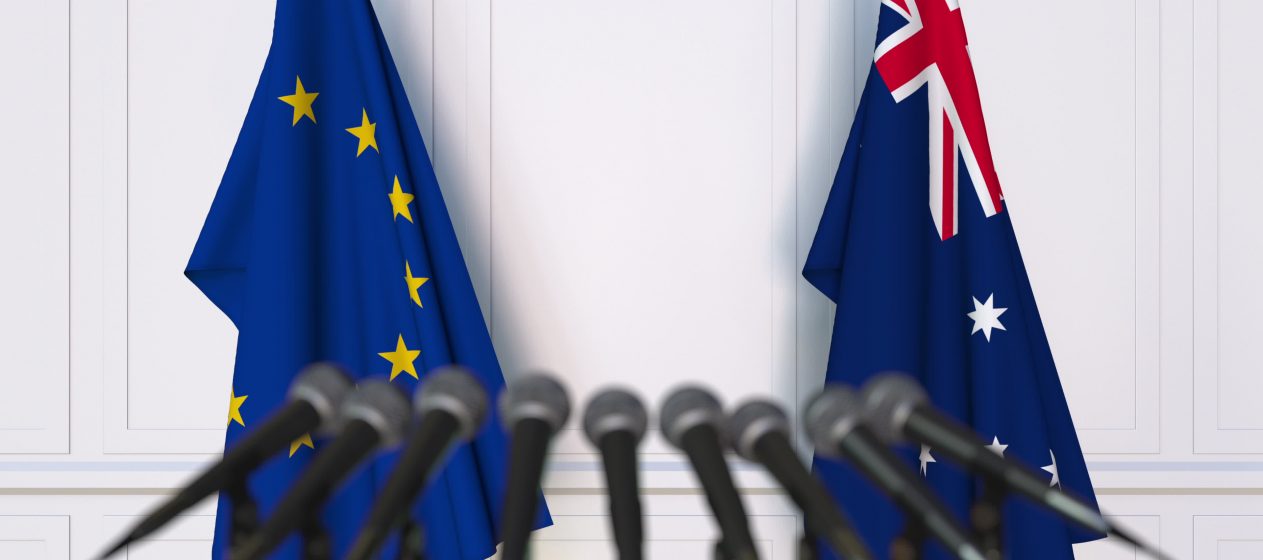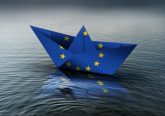The EU and Australia have been in negotiations over a Free Trade Agreement (FTA) since 18 June 2018. There is wide-spread agreement that closer ties and increased trade would be mutually beneficial. However, a substantial obstacle is impeding progress: The EU has asked Australia to ensure the protection of speciality goods of regional origin denoted by Geographical Indicators (236 spirits and 172 agricultural and other foodstuffs).
A Geographical Indicator (GI) is a distinctive certification sign that is utilised to help identify a product whose quality, reputation and other criteria is linked to its geographical origin. Within the EU, GIs are used to protect agricultural products and foodstuffs, wines and spirits. Examples include parmesan, champagne or Kalamata olive oil. Thus, olive oil, can only be named Kalamata olive oil within the EU Market if produced in the Kalamata region of Greece. While this satisfies Greek producers, who would enjoy protections against competition, it raises concerns amongst the Australian producers. Under the GI policy, an Australian company that is used to selling Kalamata Oil produced in Australia would have to rename its product.
Although EU negotiators have assured that the inclusion of GI is simply about quality control, there has been significant public opposition from Australia’s agricultural sector, fearing that they could be worse off with the costs attached to GI’s. While the EU has stood firm on the position to pursue GIs and considers them of “utmost importance,” the Australian Trade Minister has made no concrete promise to commit to accepting GI provisions and stated that he will not be pursuing a trade deal against Australia’s interests. After all, agriculture is a key industry in Australia’s rural communities and wields substantial political power.
To resolve this impasse, something has got to give. The article argues that the EU should take the initiative and offer concessions, considering the wider picture and possible implications of the free trade agreement: Australia holds the potential to be a platform to access Asia’s booming markets, whereas protected regional products account only for a small share of all EU exports.
APPRECIATE ACCESS TO ASIA
The EU itself has recognised the need to improve links with Asia, a region that already represents 46% of the global economy, and is expected to the represent over half by 2050. Additionally, by 2030, Asia will represent over 60% of the global middle-class population. Hence, Asia is a lucrative export market which cannot be ignored. Currently, the EU does have trade agreements with countries in the Asian region. These include Japan, South Korea, Singapore and Vietnam. However, there are other major economies with which the EU does not have trade agreements, including Indonesia (fourth largest country in the world), ASEAN (booming middle class and on set to grow 7% a year) and China (already the world’s second-largest economy).
In contrast, Australia has established trade agreements with each of the above-mentioned countries. Earlier this year, Australia and Indonesia signed the Comprehensive Economic Partnership Agreement (CEPA). In 2015, a comprehensive China-Australia Free Trade Agreement (Chafta), came into effect. In 2010, the agreement establishing the ASEAN-Australia-New Zealand Free Trade Area (AANZFTA) entered into force. Furthermore, various international companies have moved to Australia, with its advantageous time zone, rule of law and its high standards of physical and communication infrastructure, as base to launch into the promising Asia-Pacific market. Australia has been referred to as an “inter-continental bridge” because of its potential and ability to bring together the Asian and European economies. In short, there are booming Asian markets, to which the EU has not been able to secure access, but with which Australia already has established strong ties. With access to expertise in the region, Australia presents a good opportunity for EU enterprises looking for a launching pad to access Asia.
DISREGARD GEOGRAPHICAL INDICATORS?
There is another reason why GIs should not derail the trade deal between the EU and Australia: the proposed GI-protected products represent a small share of extra-EU trade. In fact, food and drink (the GIs in question) represent only 6% of all EU exports, while machinery and vehicles, accounted for 41%. A recent report published by the EU-Australia Leadership Forum found that with 2,200 European companies operating in Australia, the three sectors in which European companies have gained traction are renewable energy, infrastructure and defence. The EU’s top exports to Australia are motor vehicles and medicines. None of these sectors are covered by Geographical Indicators. Thus, it might seem that EU negotiators should sacrifice GI-protections to secure the free trade agreement with Australia, as it represents a negligible share of total exports. Especially in comparison to the other EU export industries set to benefit.
Yet, there is also good reason for the EU not to jeopardise GI standards, even for a highly beneficial FTA with Australia: intra-EU trade. Overall, the ratio of total intra-EU to extra-EU trade is around 2:1. This means that most goods go not to customers outside the trading bloc, but within other EU member states. According to the World Trade Organisation, the EU is the only regional trade agreement in which intra-regional trade is higher than extra-regional trade. This means that while GI-protected agricultural products and foodstuff might not matter much for the EU’s external trade with Australia, they matter more for intra-EU trade. Especially, as the agri-food industry remains one of the top producers of goods and sources of employment within the European Union, the EU might be unwilling to water down standards of origin designed to protect regional products. However, not all member states or industry sectors benefit equally from GI-standards, leading to differences in preferences and priorities.
CONCLUSION
Representing a party in a trade negotiation is always a delicate balancing act between various interests and stakeholders. It is especially complex when having to represent 28 countries at the same time. The difficulty in finding a common course, to begin with, might make corrections later on less appealing. Nevertheless, this article urges the EU to consider offering concessions on GI-standards in the FTA negotiations with Australia. There is too much to be gained to walk away from or get bogged down in negotiations. Not only do EU companies stand to benefit from Australia’s unique position as a gateway to the booming Asian economies, but also from increased bi-lateral trade with Australia. On the face of it, Geographical Indicators might seem appealing to those directly benefitting, but the benefits of increasing market access and numbers of customers should more than offset any potential costs.







